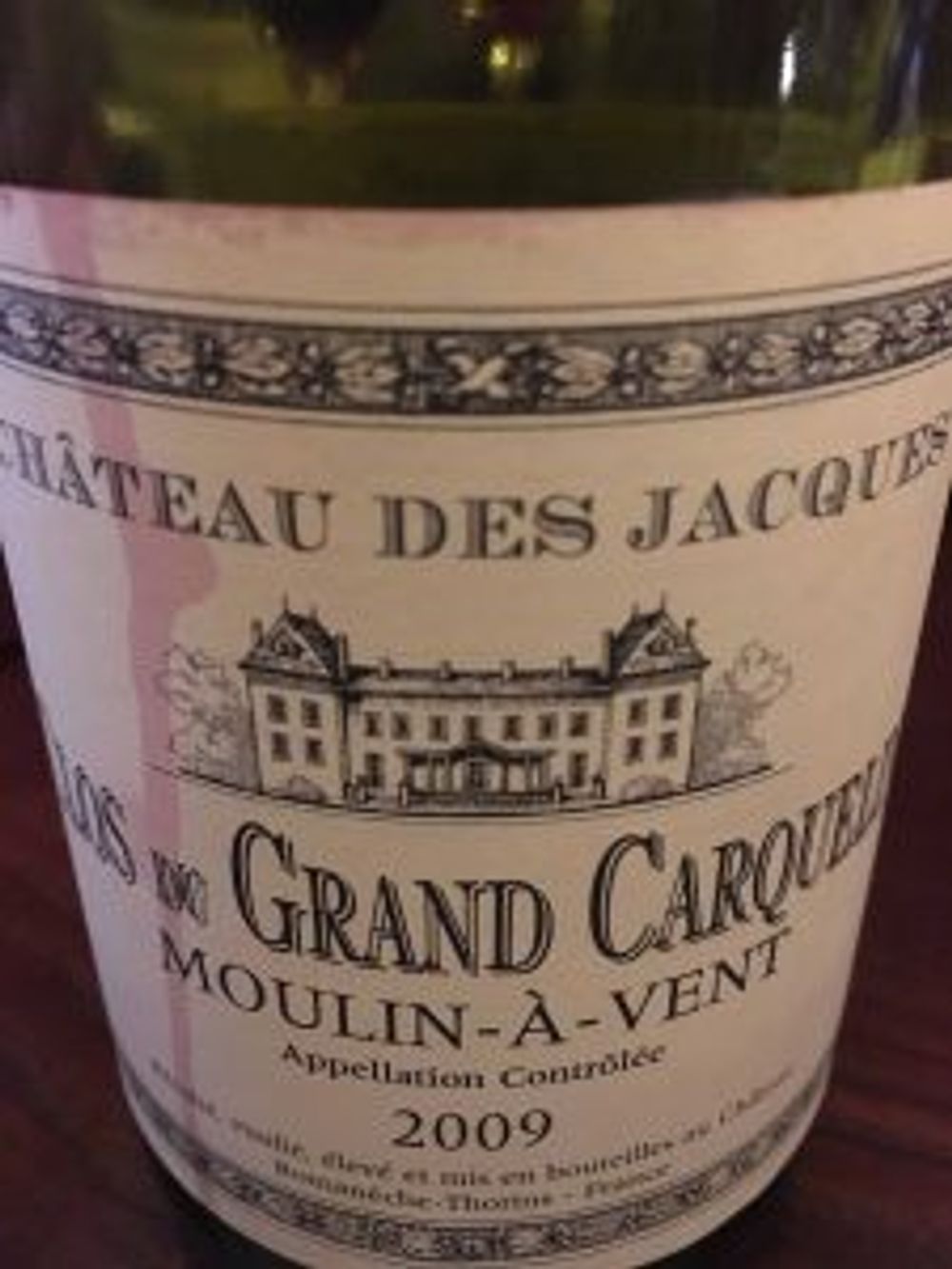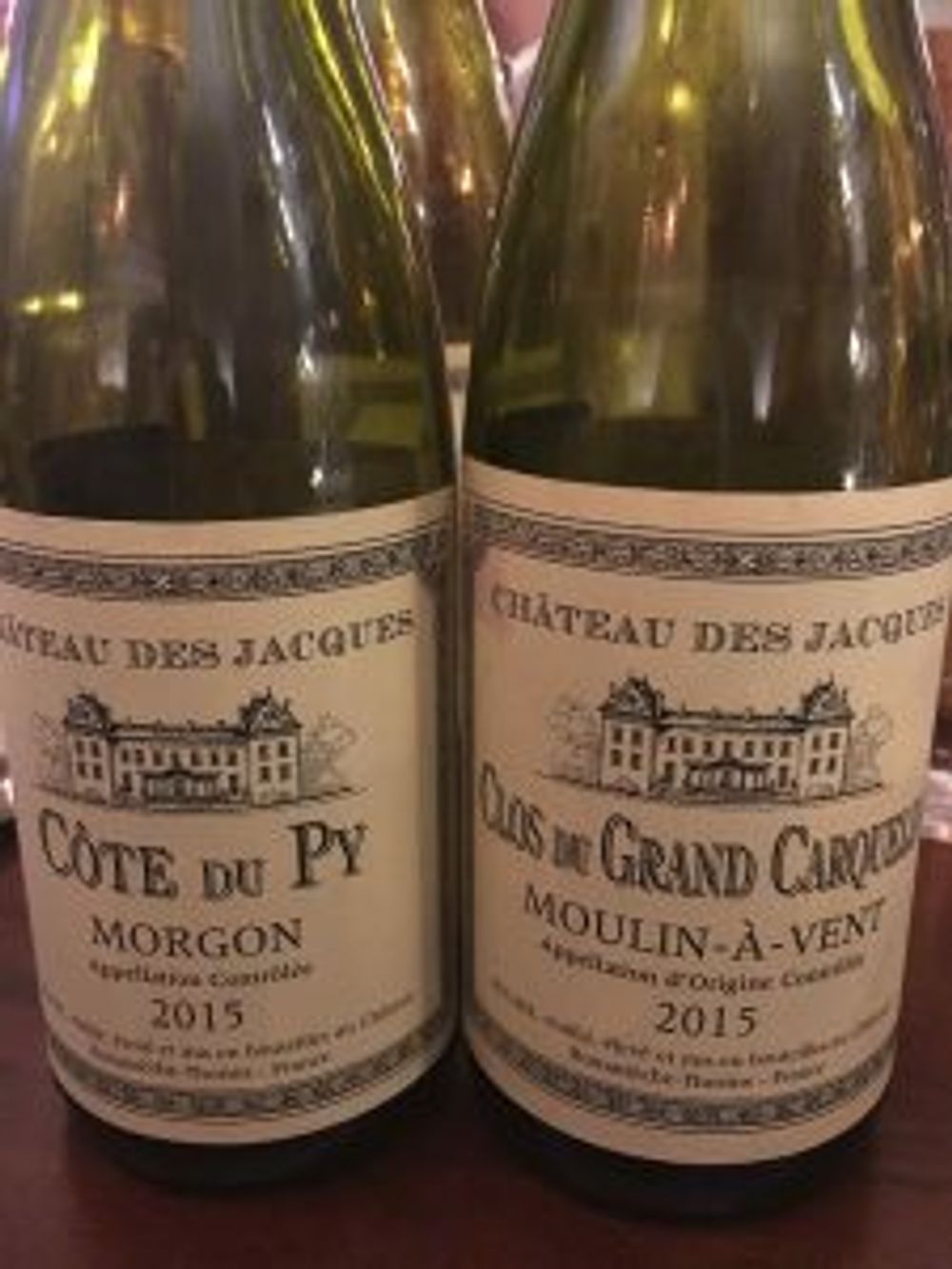Six Beaujolais reds from 20 years of Château des Jacques vintages are tasted to discover the ageing potential of Gamay.
It’s hardly surprising that Cyril Chirouze, winemaker of Beaujolais’ Château des Jacques, wants to educate people about the ties between Burgundy and Beaujolais.
While Burgundy has had all the attention of late, like the kid in the class who sits at the front, Beaujolais has sat sulkily at the back, continually being looked over because they always seem so immature.
While the prices of Chardonnay and Pinot Noir have reached stratospheric heights, Beaujolais has failed to lift its price point, despite having two fine vintages in 2009 and 2010.
Twenty years on since Burgundy’s Louis Jadot acquired Château des Jacques, Cyril Chirouze is in town with a stack of bottles – old and new – to prove a number of points about the Burgundy connection. The fact that he and other Beaujolais producers are in London to show off the 2015 vintage, which many are heralding as one of the best vintages ever, is obviously a good time to start crowing about the quality and the oft-neglected attributes of Gamay.
Putting Beaujolais Nouveau to rest
We start by putting to bed that bête noir of the region – Beaujolais Nouveau.

Beaujolais Nouveau – responsible for weird behaviour everywhere
I remember in the early 1980s you knew exactly when the new vintage of Beaujolais was out. This was when, in central London, you had to step over bodies in the street… in November. Media and City types could be seen lying prostrate on the pavement with purple lips, usually being violently ill. French restaurants, adorned with purple balloons, were issuing forth what can only be described as one unholy din.
Chirouze explains that Beaujolais Nouveau was the invention of Beaujolais as a way of celebrating the relaxation of restrictive release dates. And also to show off the light fruity, low tannic style of Beaujolais that you get through carbonic maceration, a style of winemaking he feels that unfairly limits people’s interest in the region. Not surprisingly far less AOC money goes into marketing this angle compared to the 70s and 80s.
“People think of Beaujolais as a party wine,” he says, “but I want to help change the identity of Beaujolais and open people’s eyes to the fact that Beaujolais has a lot of complexity, it can have lots of styles and that it can be aged in bottles.”
Chirouze points out that Gamay belongs to the same family as Pinot Noir, that at the turn of the century Burgundy and Beaujolais had identical vintages – good and bad – and that, given a good vintage, he believes, Gamay can age just as well as Pinot Noir.
So what were the Château des Jacques wines like?
The wines we taste are from Morgon, that is the most Burgundian and earthy of the 10 Beaujolais crus, and from Moulin a Vent, that has the greatest ageing potential.
The reds we taste kick off with Moulin a Vent 2012, which is a blend of all the single vineyards without erasing the style of the vineyards (“we want to show the cru”). Vinification is 33% tank, new oak, old oak. This is so youthful in appearance, aromas and taste. Even though it is an average to difficult vintage, this wine will still drink 10-15 years after release. Paired with: rabbit lasagne, raw langoustine, ceviche razor clams.

The Moulin a Vent Clos du Grand Carquelin 2009 is next to show what a single vineyard produces when the vintage allows. The wine is fermented for 25 days and then aged in oak 50/50 new and old. The wine is so rich, fruity and still very fresh indeed, making me wish I’d kept some from my cellar and not drunk the lot. This vineyard is just below the windmill and on tough ‘granitic’ soil. Remarkably, Chirouze estimates that this wine will keep for another 40 years. “We recently drank some 1976 and it was still very much alive,” he says, adding that 2009 and 2015 are similar vintages to 1976.
The Morgon Côte du Py 2006 shows how the mosaic of terroir in the region affects the wine. The subsoil in Morgon is very different even though this is just five miles away from Moulin a Vent. Here the ‘pink’ soil is of volcanic origin and features ‘blue stone’ which gives the wine much greater structure, spiciness and directness, compared to the silkiness of Moulin a Vent. Paired with: beef cheeks and smoked bone marrow, kale and hazelnut pesto.
The Moulin a Vent 1996 has been brought partly because this marks the 20th anniversary of when Château des Jacques went under new ownership, but also because it proves Chirouze’s point about ageing. Even though this was a difficult year, the wine is gorgeous. The wine has a considerable fruit profile, elegance, backbone of acidity and fresh as a daisy. “I think that Gamay has exactly the same ageing potential as Pinot Noir,” Chirouze says confidently. Tasted blind this could easily be mistaken for Pinot, that’s for sure.

The last two reds we drank were barrel samples of the 2015 vintage, Moulin a Vent Clos du Grand Carquelin 2015 and Morgon Côte du Py 2015. Both are big, rich and beefy as you’d expect, but the power of the balsamic fruit on the former is mesmerising. It is the low yield and the sub-soil that keeps the freshness within the concentration. With the Morgon, the greater structure is again evident, although the nose is dumb. The differences between the two wines is quite profound given their youth and geographical proximity.
As a slightly sobering note Chirouze explains about the 2015 vintage that there were only two days of rain in the ripening period – May 8 and August 8. They picked the Morgon in August, the fourth time in the past 15 years that they have had to do this – 2003, 2007, 2011 and 2015. Prior to then it was picked in August just twice in the Twentieth Century.
































